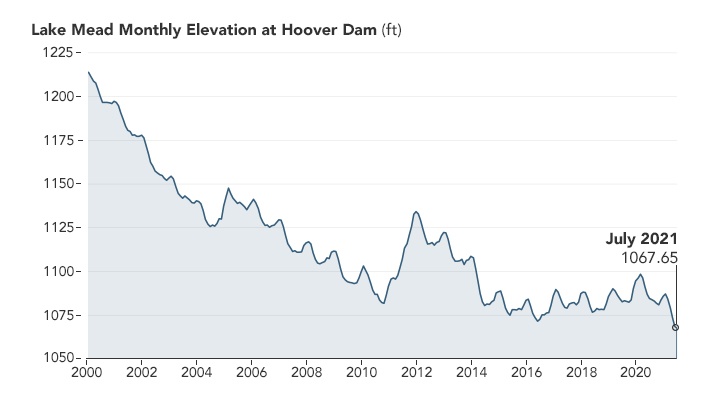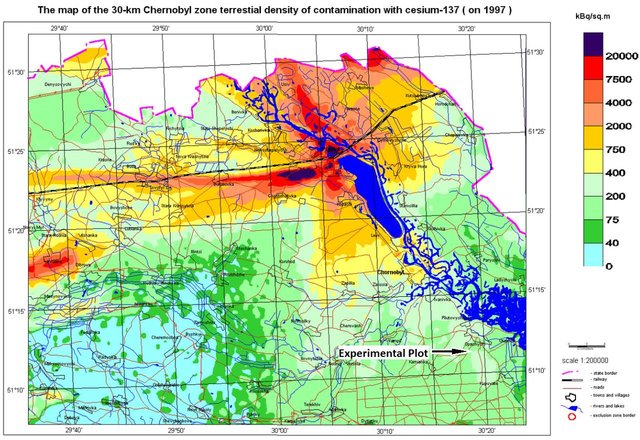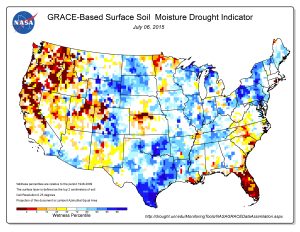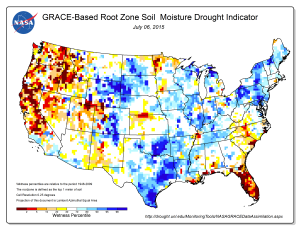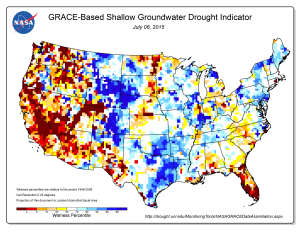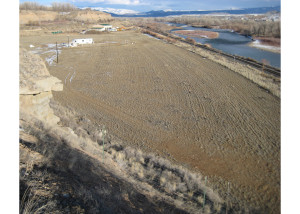Peter Lobner
1. Introduction
This article is an update to a similar article I wrote in mid-2015. At that time, California was experiencing a persistent drought and surface water resources and aquifers were being strained by high demand. At that time, there were only five desalination plants operating in California:
- Diablo Canyon NPP (seawater) desalination plant in San Luis Obispo county
- Cambria Community Services District (brackish water) desalination plant in San Luis Obispo county
- Sand City Coastal (brackish seawater) Desalination Plant in Monterey County
- WRD Robert W. Goldsworthy Desalter in Torrance
- Southern California Edison (seawater) desalination plant on Catalina Island
At that time, several other desalination plants in California were in various stages of development, ranging from construction to reactivation to planning / permitting. This article provides a brief overview of the status of these Caliifornia plants, and more recent desalination projects in the planning stage in late-2023.
2. California desalination plants in operation in mid-2015
Diablo Canyon nuclear power plant (NPP) desalination plant
In a 9 June 2015 article, Forbes reported on the Diablo Canyon NPP, located on the Pacific coast near San Luis Obispo, CA, and noted that the plant could meet 100% of its own fresh water needs with an onsite reverse osmosis (RO) + ultrafiltration desalination plant that draws seawater from the ocean. At that time, this was the largest desalinization plant operating on the U.S. West coast. The plant has a maximum fresh water production capacity of 1,500,000 gallons/day (1,681 acre-feet/year).
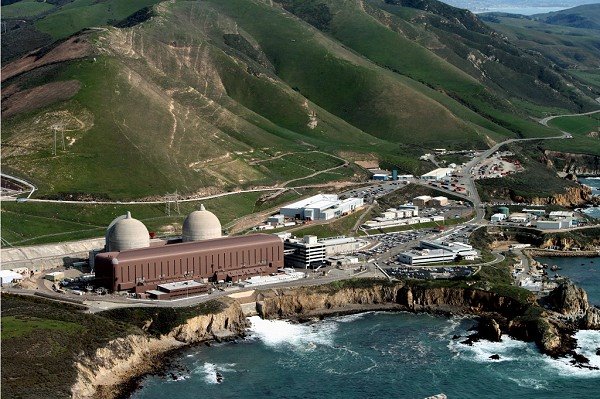
Diablo Canyon NPP. Source: PGE
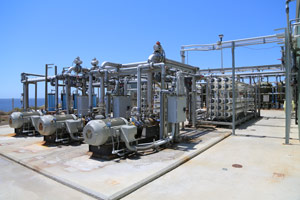
Desalination plant at Diablo Canyon NPP. Source: PGE
The Forbes article suggested that the Diablo Canyon NPP would be able to help nearby communities that currently were experiencing water shortages during a persistent drought. With additional modular RO units and a pipeline to connect to the public water system, up to 825,000 gallons/day (925 acre-feet/year) fresh water could be delivered for public consumption.
For more information on the Diablo Canyon NPP desalination plant:
- James Conca, “California’s Mega-Drought: Nuclear Power To The Rescue,” Forbes, 9 June 2016: http://www.forbes.com/sites/jamesconca/2015/06/09/californias-megadrought-nuclear-power-to-the-rescue/
- Video, “How Diablo Canyon’s desalination plant works,” originally posted by The Tribune in 2015, reposted by The Tribune on 15 July 2022: https://www.youtube.com/watch?v=LVMmGjLXkQo
- “Diablo Canyon desalination plant to help county fight wildfires, PG&E, 20 May 2015: https://www.pge.com/en_US/safety/how-the-system-works/diablo-canyon-power-plant/news-and-articles/diablo-canyon-desalination-plant-to-help-county-fight.page
Cambria Community Services District desalination plant
Also in San Luis Obispo county, this desalination plant began operating in early 2015, providing 223,000 gallons/day (250 acre-feet/year), about 35% of the town’s fresh water needs. The process itself runs a brackish water (mix of freshwater, estuary water, and highly treated sewage wastewater) through three stages of osmosis, eventually injecting treated water into the San Simeon and Santa Rosa Creek aquifers to supply the community with additional potable water. This project makes Cambria one of the first communities in California to recycle sewage wastewater into an eventual drinking-water source.
For more information on the Cambria Community Services District desalination plant:
- “Cambria, CA Overcomes Drought-Related Water Supply Shortage With Desalination Plant,” Town of Cambria: https://the-atlas.com/projects/desalination-plant-in-cambria-increases-cambria-water-supply
Sand City Coastal desalination plant
Sand City Coastal Desalination Plant in Monterey County was the first full-scale brackish seawater desalination facility in the state of California. It became operational in May 2010 and can produce 268,000 gallons/day (300 acre-feet/year).
For more information on the Sand City Coastal desalination plant:
- “Sand City Coastal Desalination Plant,” Water-Technology.net, 2023: http://www.water-technology.net/projects/sand-city-plant/
WRD Robert W. Goldsworthy Desalter in Torrance
The Goldsworthy Desalter (https://www.wrd.org/wrd-robert-w-goldsworthy-desalter) is a reverse osmosis system commissioned in 2001, and expanded in 2018, to treat 5,000,000 gallons per day of brackish water drawn from the West Coast Groundwater Basin under the City of Torrance and produce potable water for the city water system. The Desalter produces about 30% of the fresh water used by Torrance residents and businesses. The plant is owned by the Water Replenishment District (WRD) and operated by the City of Torrance.
For more information on the Goldsworthy Desalter:
- “Robert W. Goldsworthy Desalter,” WRD:https://www.wrd.org/files/875957dc0/WRD+Goldsworthy+2023+Brochure_Digital+small.pdf
- “WRD Opens Expanded “Brackish” Groundwater” Treatment Facility,” HEWS Media Group, 2018: https://www.loscerritosnews.net/2018/02/12/wrd-opens-expanded-brackish-groundwater-treatment-facility/
Southern California Edison (SCE) desalination plant on Catalina Island
SCE’s seawater desalination plant on Catalina Island has operated since the 1990s. It can produce 200,000 gallons/day (224 acre-feet/year). During winter months, the water produced by this desalination plant is enough to meet Avalon’s needs. During the summer, the water demand increases to 400,000-500,000 gallons a day, and up to 800,000 gallons a day on peak weekend days.
A second desalination unit, built in partnership with the city of Avalon and Los Angeles County, became operational on December 2015. The new desalination unit is connected to SCE’s original desalination plant and can produce an additional 150,000 gallons of water a day (168 acre-feet/year).
For more information on the SCE desalination plant on Catalina Island:
- “SCE, Avalon partner to Buy Additional Desalination Unit for Catalina Island to Delay or Avoid 50 Percent Water Rationing,” Edison International, 15 July 2015: https://newsroom.edison.com/releases/sce-avalon-partner-to-buy-additional-desalination-unit-for-catalina-island-to-potentially-delay-or-avoid-50-percent-water-rationing
- “New Desalination Plant Comes to Catalina Island,” Edison International, 23 November 2015: https://energized.edison.com/stories/new-desalination-plant-comes-to-catalina-island
3. New desalination capacity in California since 2015
Since mid-2015, two additional desalination plants have been placed in operation in California:
- Poseidon Resources Corp. Claude “Bud” Lewis desalination plant, Carlsbad, CA
- City of Santa Barbara’s Charles E. Meyer desalination plant
Poseidon Resources Corp. Claude “Bud” Lewis desalination plant, Carlsbad, CA
The Poseidon Resources Corp. seawater desalination plant in Carlsbad, CA, (http://carlsbaddesal.com) was completed in November 2015. It was officially dedicated and renamed in honor of former Carlsbad Mayor, Claude “Bud” Lewis, on 14 December 2015, in a public ceremony attended by more than 600 elected officials, community leaders and project partners. A 30-year Water Purchase Agreement is in place between the San Diego County Water Authority and Poseidon Water for the entire output of the plant, which has a design capacity of 50,000,000 gallons/day (56,050 acre-feet/year). This plant is providing about 10% of San Diego county’s fresh water needs. It currently is the largest sea water desalination plant in the western hemisphere.
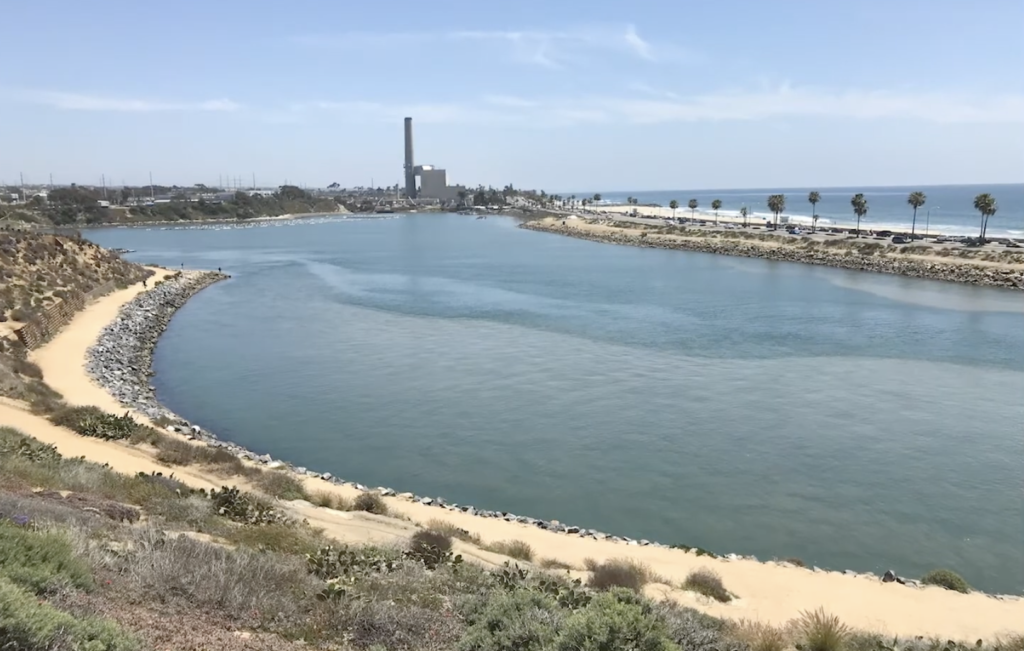
Claude “Bud” Lewis desalination plant in Carlsbad, CA. Source: screenshot from Dudek video, 2021
For more information on the Claude “Bud” Lewis desalination plant, Carlsbad, CA
- Video, “Go Inside the Carlsbad Desalination Plant | Virtual Plant Tour,” (5:07 min) posted by Dudek, 12 February 2021: https://www.youtube.com/watch?v=e1pq3Ni7Fko
- Video, “The Poseidon desalination plant in Carlsbad,” (3:24 min), posted by The San Diego Union-Tribune, 16 June 2022: https://www.youtube.com/watch?v=00jDa1D3DbY
- Joshua Emerson Smith, “Poseidon desal plant in Carlsbad needs $159M upgrade. Ratepayers will foot the bill,” The San Diego Union-Tribune, 17 June 2022: https://www.sandiegouniontribune.com/news/environment/story/2022-06-17/poseidon-desal-carlsbad-upgrade
City of Santa Barbara’s Charles E. Meyer desalination plant
The city-owned Charles E. Meyer desalination plant in Santa Barbara (https://www.countyofsb.org/2401/Desalination) was completed in 1992 and then mothballed after a short test period. In July 2015, the City Council voted unanimously to reactivate this plant, which has a licensed capacity is 6,691,0000 gallons/day (7,500 acre-feet/year) and can meet about 30% of the city’s fresh water needs. In May 2017, the startup testing at the plant was completed and the City started distributing desalinated water into the City’s water system.

For more information on the Charles E. Meyer desalination plant:
- Amanda Covarrubias, “Santa Barbara working to reactivate mothballed desalination plant, The Los Angeles Times, 3 March 2015: http://www.latimes.com/local/california/la-me-santa-barbara-desal-20150303-story.html
- Video, “Santa Barbara Desalination Plant: The Supply Nearby,” (11:20 min), posted by SaveWaterSB, 16 January 2018: https://www.youtube.com/watch?v=6dkHkuVMC9g&t=9s
4. Other desalination projects planned in California in mid-2015
In mid-2015, several other desalination projects were in the planning stage, including:
- Doheny Ocean desalination project in south Orange County
- California American Water (Cal-Am) desalination project in Marina, CA
- Poseidon Resources Corp. desalination project in Huntington Beach
- Deepwater Desal project at Moss Landing
Since then, some have advanced while others have been withdrawn. Here’s a brief summary of their current status.
Doheny Ocean Desalination Project in south Orange County – approved, under construction
This coastal seawater desalination plant has a design capacity of 15,000,000 gallons/day (16,816 acre-feet/year). The project was unanimously approved by the California Coastal Commission in September 2022. The completion date has slipped from 2020 (original estimate in 2015) to late 2028 or early 2029.
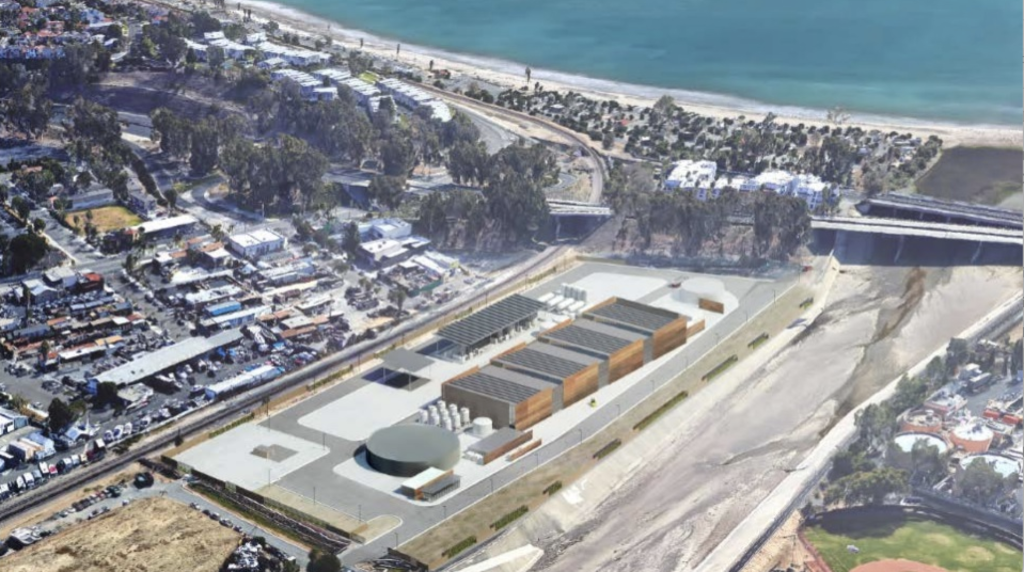
Artist’s rendering of the desalination plant proposed for Doheny Beach. Source: South Coast Water District
For more information on the Doheny Ocean Desalination Project
- “Staff Report: Regular Calendar – Application No. 9-20-0691,” California Coastal Commission, 30 September 2022: https://documents.coastal.ca.gov/reports/2022/10/Th10a/Th10a-10-2022-report.pdf
- Brooke Staggs, “As cost for Doheny desalination plant grows, California aims to streamline more projects,” The orange County Register, 1 September 2023: https://www.ocregister.com/2023/09/01/as-cost-for-doheny-desalination-plant-grows-california-aims-to-streamline-more-projects/
California American Water (Cal-Am) desalination project in Marina, CA – approved, pre-construction
This seawater distillation plant project was approved by the California Coastal Commission on 17 November 2022 at a capacity of 4,800,000 gallons/day (5,380 acre-feet/year). Cal-Am (https://www.amwater.com/caaw/) plans to have the plant operating by the end of 2027.
For more information on the Cal-Am Marina desalination project:
- Krista Almanzan, “Water Woes: Cal-Am Takes Portfolio Approach,” 90.3 KAZU, 27 March 2013: https://www.kazu.org/2013-03-27/water-woes-cal-am-takes-portfolio-approach
- “Cal Am’s Desal Raises Critical Concerns for Marina’s Water Future,” City of Marina, 2022: https://cityofmarina.org/935/Cal-Ams-Desal-Raises-Critical-Concerns-f
- Rachel Becker, “Another California desalination plant approved — the most contentious one yet,” CalMatters, 17 November 2022: https://calmatters.org/environment/2022/11/desalination-plant-monterey-california/
- Video, “Marina desalination plant approved,” (2:58 min), KSBW Action News 9, 18 November 2022: https://www.youtube.com/watch?v=IPvsP0rUInI
Poseidon Resources Corp. seawater desalination project, Huntington Beach, CA – withdrawn
This project was in the final phase of permitting and originally was expected to be completed in 2018, with a capacity of 50,000,000 gallons/day. The project was withdrawn in February 2023.
For more information on the Huntington Beach desalination project:
- “Planning Major Projects – Poseidon Desalination Plant,” City of Huntington Beach, last updated 13 February 2023:: https://www.huntingtonbeachca.gov/government/departments/planning/major/major-projects-view.cfm?ID=34
DeepWater Desal project at Moss Landing – withdrawn
DeepWater Desal (https://www.deepwaterdesal.com) originally proposed to build a 8,922,000 gallons/day (10,000 acre-feet/year) seawater desalination plant that would draw water from the Pacific Ocean through an existing underwater pipeline that, in the 1940s, was used to move diesel oil from offshore ships to what is now the gas-fired Dynegy Power Plant. The pipeline has been unused for decades. On 4 June 2021, the National Oceanographic and Atmospheric Administration (NOAA) announced that it was terminating the NEPA process and closing the Project’s permit application because the permit applicant (DeepWater Desal) notified NOAA in May 2020 that the primary scope of the Project changed from desalination to land-based aquaculture.
For more information on the DeepWater Desal project:
- Vinnee Tong, “Water Woes: Deepwater Sees Solution Offshore,” 90.3 KAZU, 28 March 2013: https://www.kazu.org/2013-03-28/water-woes-deepwater-sees-solution-offshore
- “Resource Issues: Desalination and Water Supply Project Details – Monterey Bay Regional Water Project – #NOAA-NOS-2015-0069,” Monterey Bay National Marine Sanctuary: https://montereybay.noaa.gov/resourcepro/resmanissues/desal_projects/deepwater.html
- “Withdrawal of Notice of Intent To Prepare an Environmental Impact Statement for Monterey Bay Regional Water Project Desalination Facility,” NOAA, published in the Federal Register, 4 June 2021: https://www.federalregister.gov/documents/2021/06/04/2021-11714/withdrawal-of-notice-of-intent-to-prepare-an-environmental-impact-statement-for-monterey-bay
The People’s Moss Landing Desalination Project – no significant progress
In 2013, the Moss Landing Commercial Business park, LLC proposed to build a 11,950,0000 gallons/day (13,400 acre-feet/year) saltwater desalination plant using an existing subsurface harbor water intake and pumping station built by Henry Kaiser in the 1950s. A Notice of Preparation of a Draft EIR was filed in June 2015. However, in 2023, it appears that the project is not moving forward.
For more information on the People’s Moss Landing Desal project:
- Proposal, “The People’s Moss Landing Desal Project,” Moss Landing Commercial Business park, LLC , 15 February 2013: https://www.mpwmd.net/desalination-projects/MPWMD_Alt_Desal/2013/PeoplesMossLandingProject.pdf
- Doug McKnight, “Water Woes: People’s Moss Landing Goes Back to the Future,” 90.3 KAZU, 29 March 2013: https://www.kazu.org/2013-03-29/water-woes-peoples-moss-landing-goes-back-to-the-future
Armstrong Ranch brackish water desalination plant, Marina Coast, CA – no significant progress
Seawater intrusion into the aquifer underlying the Marina Coast area is aggravated by extensive groundwater pumping for local agriculture and residents in marina and Fort Ord. The Armstrong Ranch property, which occupies both sides of Highway 1, sits atop aquifers that are impacted by seawater intrusion. A deep aquifer of clean fresh water underlying the area also is being heavily pumped.
A brackish water desalination plant was proposed for Armstrong Ranch, with a design capacity of 2,409,000 gallons/day (2,700 acre-feet/year). One proposal suggested that 150 acres of the Armstrong Ranch parcel could host enough solar panels to both power the desalination plant and sell back surplus power to the grid.
It appears that there has been no significant action in developing this desalination plant.
For more information on the Armstrong Ranch / Marina Coast desal project:
- “Marina Coast gets gangbusters for its own desal plant to supply Fort Ord,” Monterey County Weekly, 12 March 2015: https://www.montereycountyweekly.com/news/local_news/marina-coast-gets-gangbusters-for-its-own-desal-plant-to/article_10f8adc4-c82b-11e4-a7f6-9b88d4a73155.html
5. More recent desalination projects planned in California
In April 2023, California Department of Water Resources announced that the following three projects has been selected under the Water Grant Desalination Program for funding:
- Water Replenishment District (WRD) of Southern California Construction Project: In Los Angeles County, a project in the City of Torrance will construct a conveyance pipeline to connect an existing well to the existing WRD Robert W. Goldsworthy Desalter system and install a self-cleaning auto-strainer. The project will reduce the community’s reliance on imported water, provide a sustainable local potable water supply, and increase desalinated water production by 1,070,667 gallons/day (1,120-acre feet per year) or approximately enough water for 2,200 households.
- Westlands Water District Design Pilot Project: In Fresno County, the project will desalinate brackish groundwater from the westside upper aquifer and use salt-tolerant plants to remove salts from the brine. The project will provide cost-effective, reliable and high-quality water to the district and the communities of Coalinga, Huron and Avenal.
- City of Fort Bragg Design Pilot Project: Near the City of Fort Bragg, the project will install an innovative, wave-powered, seawater desalination iceberg buoy to provide potable water to residents. The project will diversify the city’s water supply portfolio, create a locally controlled, sustainable, and carbon-free potable water supply, produce water without grid electricity, and strengthen water resiliency during future droughts.
